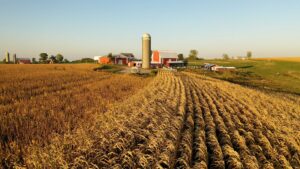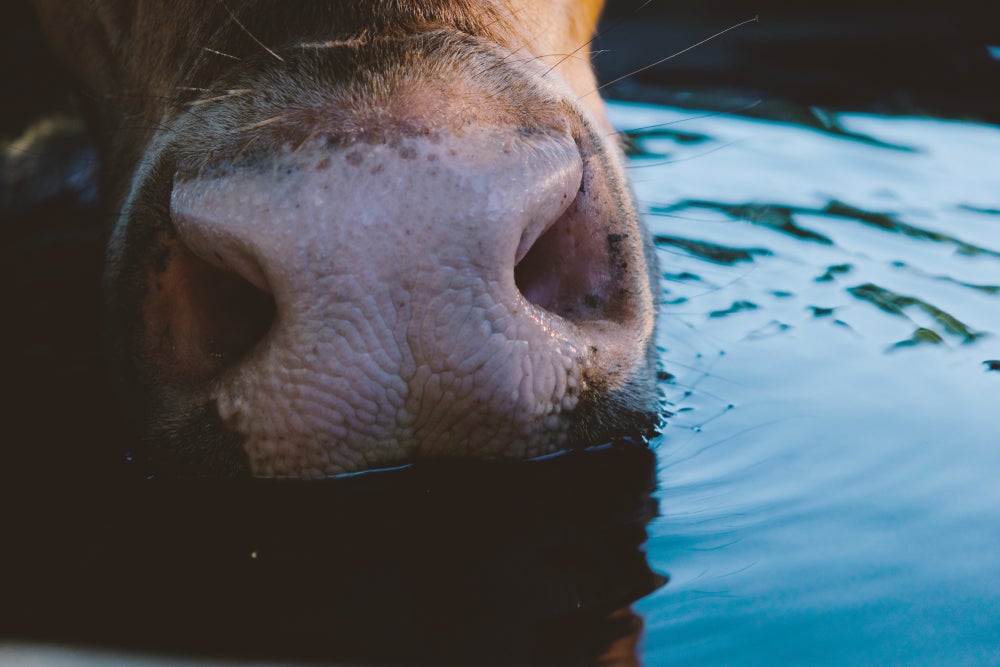Subscribe to Updates
Get the latest agriculture news and updates directly to your inbox.
Author: staff
On November 17, 2025, the U.S. Environmental Protection Agency and the Department of the Army unveiled a long-awaited proposal to once again revise the definition of “waters of the United States,” known simply as WOTUS. The move is the administration’s formal response to the Supreme Court’s 2023 Sackett v. EPA decision and marks the latest major turn in a regulatory debate that has stretched across four presidencies. According to the pre-publication version of the proposed rule, the agencies say they are “seeking public comment on a proposed rule that revises key aspects of the definition of ‘waters of the United…
Key Points The longest U.S. government shutdown ended last week after the president signed a spending package that will fund USDA through the rest of the new fiscal year.USDA’s National Agricultural Statistics Service confirmed the Crop Progress report will not be released today, saying it is “working on getting all reports rescheduled.”Without new data, historical mid-November reports show harvest activity typically near completion for corn and soybeans, with winter wheat planting and emergence largely finished. The longest shutdown in U.S. history ended late Wednesday last week when the president signed a spending package that effectively reopened the government. Although the…
Image by Nokwan007, Shutterstock Top Third Ag Marketing, a division of StoneX Financial Services Inc., helps farmers become better agricultural marketers with the goal of marketing crops in the top third of prices. Mark Gold and his team provide AGDAILY.com with the latest information and a look ahead in their audio commentary. Listen to Mark Gold’s Weekly Grain Comments here! https://www.agdaily.com/wp-content/uploads/2025/11/Top-Third-agdaily-2025-11-17.mp3
A major federal court decision out of the California-based Ninth Circuit is reshaping how U.S. Department of Agriculture will have to think about GMO (genetically engineered) food disclosure, with big implications for the long-running debate over highly refined ingredients, QR-code labels, and what language companies can use on food packages. For now, day-to-day labeling obligations do not change, but the ruling sets the stage for USDA to rewrite key parts of its National Bioengineered Food Disclosure Standard in ways that could reach all the way back to the farm gate. On October 31, 2025, the U.S. Court of Appeals for…
Ahead of 9 a.m. CT, December corn was up 4¼¢ at $4.34½ per bushel. January soybeans were up 20½¢ at $11.45 per bushel. March CBOT wheat was up 13¼¢ at $5.54¾ per bushel. March KC wheat was up 12¼¢ at $5.43¼ per bushel. March Minneapolis wheat was up 5½¢ at $5.81¾. Ahead of 9 a.m. CT, January feeder cattle were up $2.90 at $322.48 per hundredweight (cwt). December live cattle were down 8¢ at $221.28 per cwt. December lean hogs were up $1.83 at $81.23 per cwt. “Grain and soybean futures recovered somewhat from their Friday sell-off with soybean contracts…
Autonomous machines and technology hitting the market today eliminate the need for human labor for specific on-farm tasks. If you’re struggling to find reliable, affordable labor, these innovations may present solutions. But how do you know it’s time to invest? “This has been going on forever,” said Chad Hart, Extension economist at Iowa State University. “What is different now is that the sophistication of the machinery is such that it’s replacing labor that, say a generation or two ago, we couldn’t imagine that there would be a machine that would do that type of work.” Do Your Research “Farmers really…
The longest government shutdown in American history is over. President Donald Trump has signed into law legislation that will fully fund USDA and the FDA through the rest of the new fiscal year. Agri-Pulse Newsmakers asked Tennessee Rep. John Rose about why the new continuing resolution is important for agriculture. He also shared his thoughts on what’s at stake for agriculture in a ruling from the Supreme Court over whether the president properly used a 1977 law to impose tariffs on countries across the globe. Then, Tom Sell with Combest, Sell & Associates and Anne MacMillan with Invariant discussed when…
by Brandon Kingdollar For Hannah DeLange, the most rewarding part of managing Redhead Hemp’s Durham location has been “creating a space for people to feel comfortable and confident” — crafting an inviting social setting much like a coffee shop or bar. The shelves are lined with CBD gummies, Delta-9 sangrias, and THC caramels, among a host of other drinks and candies with promises like “sleep with benefits” and “lower calories, higher vibes.” The shop interior has a cozy feel, with plants lining brick walls flush with brightly colored artwork, and plush sofas and chairs to relax on. At the store’s…
The U.S. Drought Monitor reported mostly dry weather this week across the Great Plains, Minnesota, and Wisconsin, the south-central U.S. and the Southwest. Parts of the Northwest received moderate to heavy precipitation amounts, with northern California northward into the Pacific Northwest receiving amounts locally over 3 inches. Reports of locally higher precipitation amounts fell in the Northeast and in portions of the Great Lakes region, including heavy lake-effect snow in north-central and northwest Indiana. Midwest Comparison of Midwest drought conditions from May 6 and November 11 with a statistical table showing changes in severity levels. The Midwest received varied precipitation.…
By Robin Opsahl Gov. Kim Reynolds and Iowa State University President Wendy Wintersteen celebrated the expansion of bioindustrial manufacturing in Iowa as they joined executives of BioMADE at the ISU BioCentury Research Farm Friday for a groundbreaking ceremony. The event celebrated the kickoff of the $40 million project to bring BioMADE, a Manufacturing Innovation Institute backed by the U.S. Department of Defense, to the ISU facility. The Iowa facility was funded using $10 million from the Iowa Economic Development Authority, $10 million from ISU and $20 million from BioMADE, in addition to receiving support from the U.S. Department of Defense. The…








:max_bytes(150000):strip_icc()/2210-08-116_farm_field-320a3623098146a4b7cb6c4db45252c1.jpg)


:max_bytes(150000):strip_icc()/Markets-1-Soybeans-field-dramatic-up-14-5283b95420d5449fbb4c6ffaa3fa212f.jpeg)
:max_bytes(150000):strip_icc()/Solix_Horizontal-e1e391c161204ec9a9aec92db2f5f0aa.jpeg)
:max_bytes(150000):strip_icc()/6895916340_5f396535f9_o-972ad5a673d34233ba418fcaee4f3f33.jpg)
:max_bytes(150000):strip_icc()/50887088248_8702e49156_o-2-2000-c4d93817d27d4a1aa804c07afd06f145.jpg)
:max_bytes(150000):strip_icc()/CombineHarvestingSoybeans-MediumShot-1-2000-3c4824481cd24341a1466a26271affbd.jpg)
:max_bytes(150000):strip_icc()/biomade2-2048x1536-d54c7ddb16994ba0b55a747168e5d949.jpg)